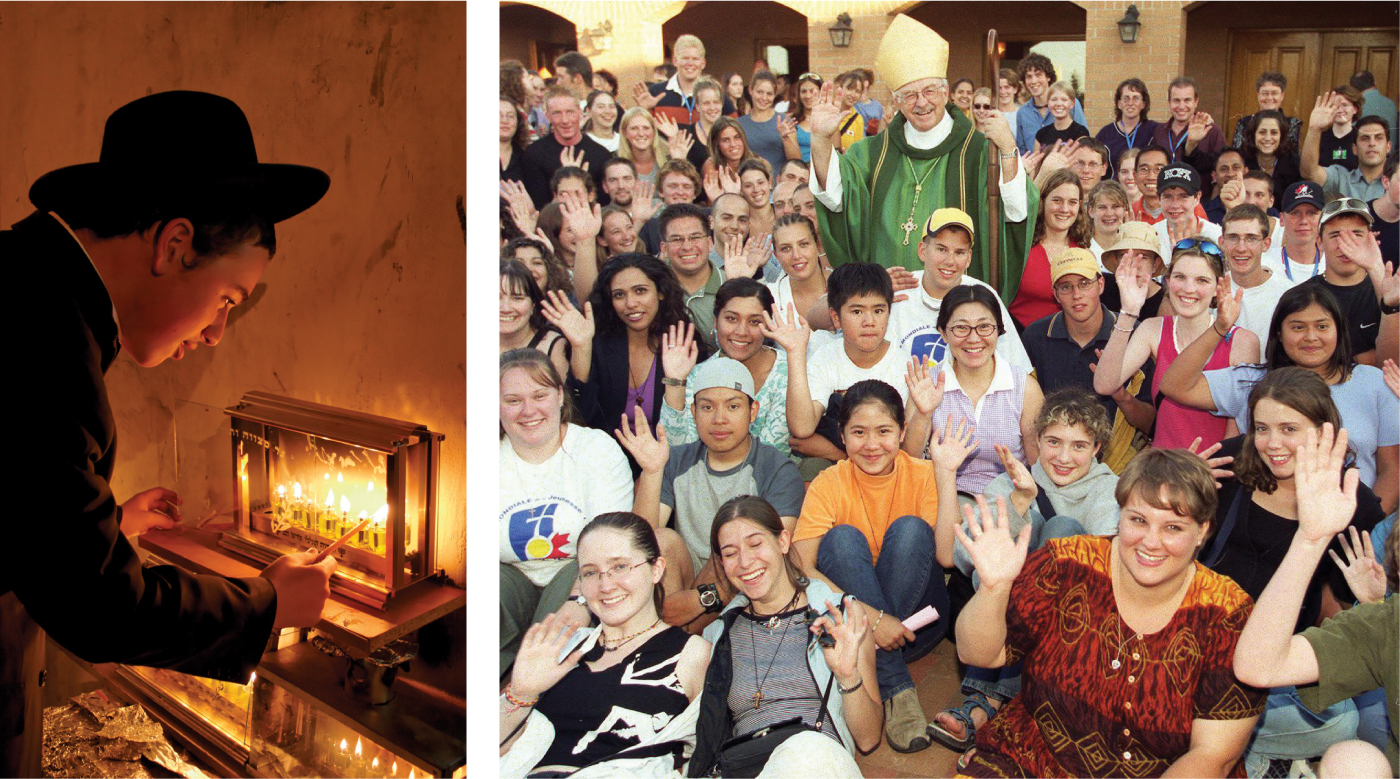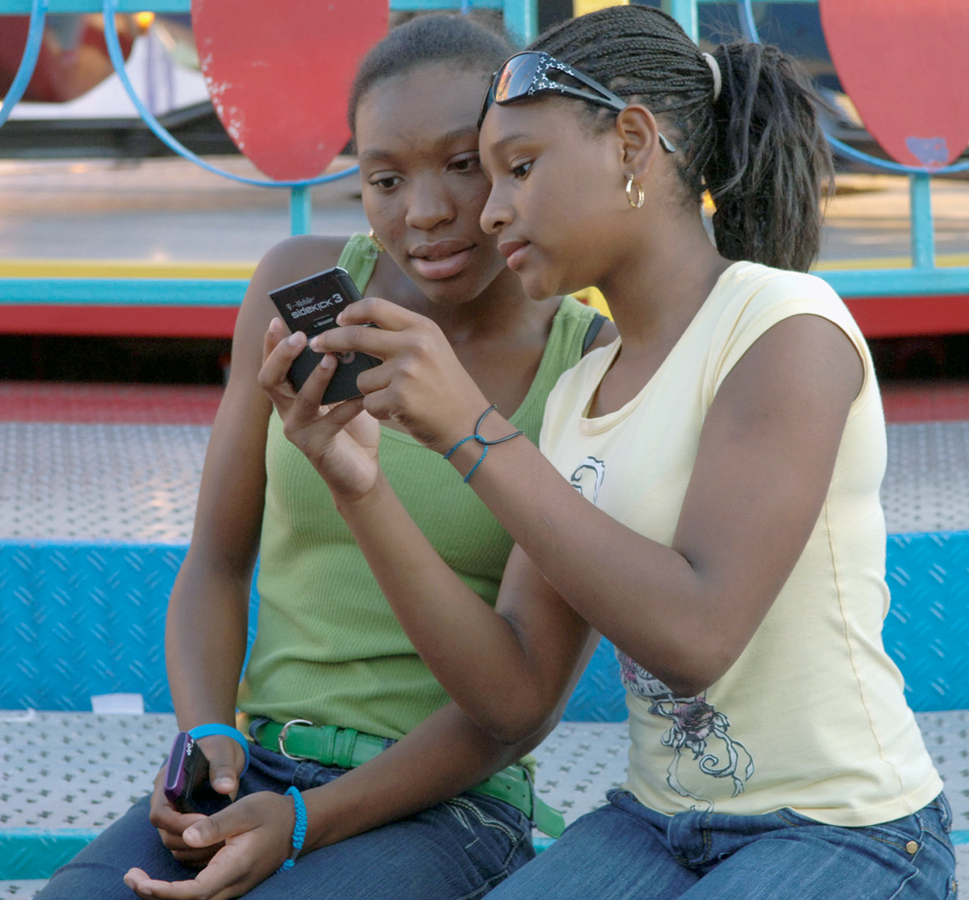10.1 Identity
Psychosocial development during adolescence is often considered the search for self-
According to Erik Erikson, life’s fifth psychosocial crisis is identity versus role confusion: Negotiating the complexities of finding one’s own identity is the primary task of adolescence (Erikson, 1968). He said this crisis is resolved with identity achievement, when adolescents have reconsidered the goals and values of their parents and culture, accepting some and discarding others, and discerning their own identity. The result is neither wholesale rejection nor unquestioning acceptance of social norms (Côté, 2009).
Not Yet Achieved
Erikson’s insights have inspired thousands of researchers. Notable among them was James Marcia, who described and measured four specific ways in which young people cope with this stage of life: (1) role confusion, (2) foreclosure, (3) moratorium, and (4) identity achievement (Marcia, 1966). The first three will be described here.
First, however, you need to know about a historical change. Over the past half-
Role confusion is the opposite of identity achievement. Characterized by lack of commitment to any goals or values, role confusion is sometimes called identity diffusion to emphasize that some adolescents seem diffuse, unfocused, and unconcerned about their future (Phillips & Pittman, 2007). Even common social demands—
Identity foreclosure occurs when young people accept traditional values (Marcia, 1966; Marcia et al., 1993). They might follow roles and customs transmitted from their parents or culture, rarely exploring alternatives. Or they might foreclose on an oppositional, negative identity—the direct opposite of whatever their parents want—
361
A more mature shelter is moratorium, a time out that includes some exploration, either in breadth (trying many things) or in depth (examining one path after making a tentative commitment) (Meeus, 2011). Societies provide many opportunities for moratoria, such as post-
Five Arenas of Identity Formation
Erikson’s (1968) view on identity versus role confusion is claimed to be the cornerstone of his theory. Individuals struggle to develop a sense of wholeness, connecting their views of self in childhood to their views of self in adulthood and the self as perceived by others. Thus, identity is formed through exchanges with others, which then become integrated in the formation of one’s sense of self (Sneed et al., 2006).
Erikson (1968) highlighted four aspects of identity: religious, political, vocational, and sexual. Although terminology and timing have changed—
Religious IdentitySome theorists believe that people categorize themselves (as well as others) into groups based on various characteristics, like religion. Burris and Jackson (2000) contend that “religion has been numbered—

CARLOS AMAT/CALGARY SUN/QMI AGENCY
362

Past parental practices influence adolescents’ religious identity. Some adolescents may question specific beliefs as their cognitive processes allow more reflection, but few have a crisis of faith unless unusual circumstances propel it (King & Roeser, 2009). In fact, some adolescents may turn to religion in ways that their parents do not anticipate. For example, a Muslim girl raised in a non-
Political IdentityAs with religion, parents influence the development of their children’s political identity, even when that political identity is a disinterest in politics—

Other teenagers become very politically engaged. The case of Malala Yousafzai is only one such example. Malala is a schoolgirl who was shot by the Taliban in Swat, Pakistan, for campaigning for a girl’s right to attend school and receive an education. Another example is youth involvement in the democracy movement that has gained momentum in several Arab countries in North Africa and the Middle East. For instance, in both Egypt and Tunisia, more than half the population is less than 30 years of age, and in both these countries (Tunisia in 2011 and Egypt in 2012) dictators were forced to give way to democratically elected governments. As more and more young people join the democracy movement, they organize their own factions, such as “Youth for Change,” and use social media such as Facebook and Twitter to draw their peers into political activism and to swell the numbers attending political demonstrations (Lange, 2011).
A word here about political and religious extremism. People who are relatively young (under age 30) are often on the front lines of revolutions or are disciples within groups that their elders consider cults. Fanatical political and religious movements have much in common: The age range of most new adherents is one of them (L. L. Dawson, 2010). However, adolescents are rarely drawn to these groups unless personal loneliness or family background (such as a parent’s death caused by an opposing group) compels them. It is a myth that every teenager is potentially a suicide bomber or willing martyr.
The topic of political identity brings up the subject of identity politics, the tendency to identify with and vote for people of one’s own race, religion, ethnicity, or sex (Bernstein, 2005; McClain et al., 2009). Identity politics is more like foreclosure than achievement because it precludes questioning and rational analysis. The identity politics that seems most attractive to youth is generational: They might reject an older member of their race, religion, or ethnic group in favour of a candidate of a different race, religion, or ethnicity who is under age 30 and who shares their views on topics such as interracial dating, gay marriage, and economic inequality.
363

PHILIPPE WOJAZER/REUTERS
Vocational IdentityVocational identity means envisioning oneself as a worker in a particular occupation. Decades ago, it was thought that a person would hold this occupation for life. Once adolescents established a vocational identity, it would help them determine what courses to take in high school and whether to aim for college or university. Today, however, most workers do not hold the same job throughout their lives. According to Human Resources and Skills Development Canada, most Canadians will have about three careers and eight jobs over their lifetime (Feigelsohn, 2013). As a result, definitive early vocational identity is no longer a realistic, or necessary, goal.
This does not mean, however, that beginning to establish career goals and a vocational identity are irrelevant. As explained in Chapter 9, adolescents are more likely to be engaged in their education if they believe that they are learning skills they will need. A specific vocational identity takes years to establish, but wanting to become a self-
Some adolescents may begin to establish their vocational identity through part-
Even for teenagers who do find part-
364

TOM COCKREM/LONELY PLANET MAGES/GETTY IMAGES
Gender IdentityAs stated in Chapter 6, for social scientists sex and sexual refer to biological characteristics, whereas gender refers to cultural and social attributes. The distinction between biology and culture is not always obvious, since the body is affected by behaviour and vice versa. Nonetheless, today Erikson’s term sexual identity has been replaced by gender identity (Denny & Pittman, 2007), which refers primarily to a person’s self-
Gender identity often (but not always) begins with the person’s biological sex and leads to a gender role, one that society considers appropriate for that gender. Gender roles once meant that only men were employed; they were breadwinners (good providers) and women were housewives (married to their houses). When women entered the labour market in large numbers in the 1970s, gender roles expanded but remained distinct, as with secretary/businessman, nurse/doctor, pink collar/blue collar. Now vocational roles are increasingly unisex.
It is apparent that gender identity is much more complicated than once thought (Perry & Pauletti, 2011). An increasing number of adolescents feel that they do not identify with their biological sex. In some places, it may be possible for these children to be treated as a member of the opposite sex by adopting different clothing and friends—
Ethnic IdentityEspecially today and in a country like Canada, many researchers contend that another aspect of identity development that needs to be considered is ethnic identity, sometimes referred to as ethnocultural identity or cultural identity. Canada has the second-
Many researchers have examined the ways in which new immigrants re-
365
John Berry of Queen’s University and his colleagues studied the way that ethnic identity is modified in young people by the experience of immigration to a new country. The researchers examined more than 5000 youths from 13 immigrant-
- an integrated identity in which youths maintain their heritage identity while incorporating aspects of the settlement, or new country, identity
- a separated identity in which youths maintain their heritage identity while rejecting the settlement identity
- a national identity in which youths reject their heritage identity and replace it with the settlement identity
- a diffuse identity in which youths reject both their heritage and their settlement identity.
Berry’s study revealed that most youths prefer an integrated identity if only because it is the most adaptive of the four types (Sam & Virta, 2001; Stuart & Ward, 2011). It is also a type of ethnic identity that is well received in a country like Canada, where legislation such as the Multiculturalism Act and the Canadian Charter of Rights and Freedoms guarantee the rights of all individuals to their own identity (Bourhis et al., 1997).

KEY points
- As Erikson famously recognized, adolescents experience an identity crisis, asking “Who am I?”
- Identity achievement is arduous and takes years to accomplish. Researchers stress that identity formation is a lifelong process.
- Many adolescents experience role confusion or sidestep the anxiety via foreclosure or moratoria.
- In establishing religious and political identity, adolescents often follow parental examples.
- Achieving vocational and gender identity today is more complicated than it was 50 years ago, partly because the number of careers options, as well as the variety of gender identities, have increased.
- Ethnic identity needs to be included in an understanding of identity formation, especially among visible minority immigrants. It is complex and varied, as individuals need to take into consideration their native and host country’s cultural beliefs and values.